Anyone who’s spent time in their garage working on a project in the dead of winter knows just how cold it can get in there. If you’re like me, you can relate to you hands shivering and seeing your breath as you exhale while working on that old motor cycle you’re restoring. Or maybe its the bespoke epoxy river coffee table you’ve been working on.
Heats generally not a problem if you’re moving around in the garage, like lifting weights in a home garage gym for instance. But when it comes to activities that require some finesse then the ambient temperature of your garage can make or break the project you’re working on.
This led me on a journey to figure out what exactly is the absolute best way to heat a garage.
When I googled the question “best way to heat a garage” I was met by a bunch of generic top 10 lists of heating options. The problem with these is they don’t give any real world advice. That’s where this actual aims to answer the question “best way to heat a garage” with my real world experience as a regular dude with a garage who’s gone through all the pain so you don’t have to.
What is the best way to heat a garage? Simply put, a combination of properly installed insulation. Closing off any air gaps around entry points such as the garage door and finally an inexpensive filament heating unit.
Simple right? Well, there’s a little more to it than that. I found a bunch of pitfalls and gotchas as I went through my garage heating journey. Plus a good few ideas to really save you some cash on the installation costs.
Keep reading and I’ll walk you through exactly how I did it and how you can too!
Why Focus On Insulation?
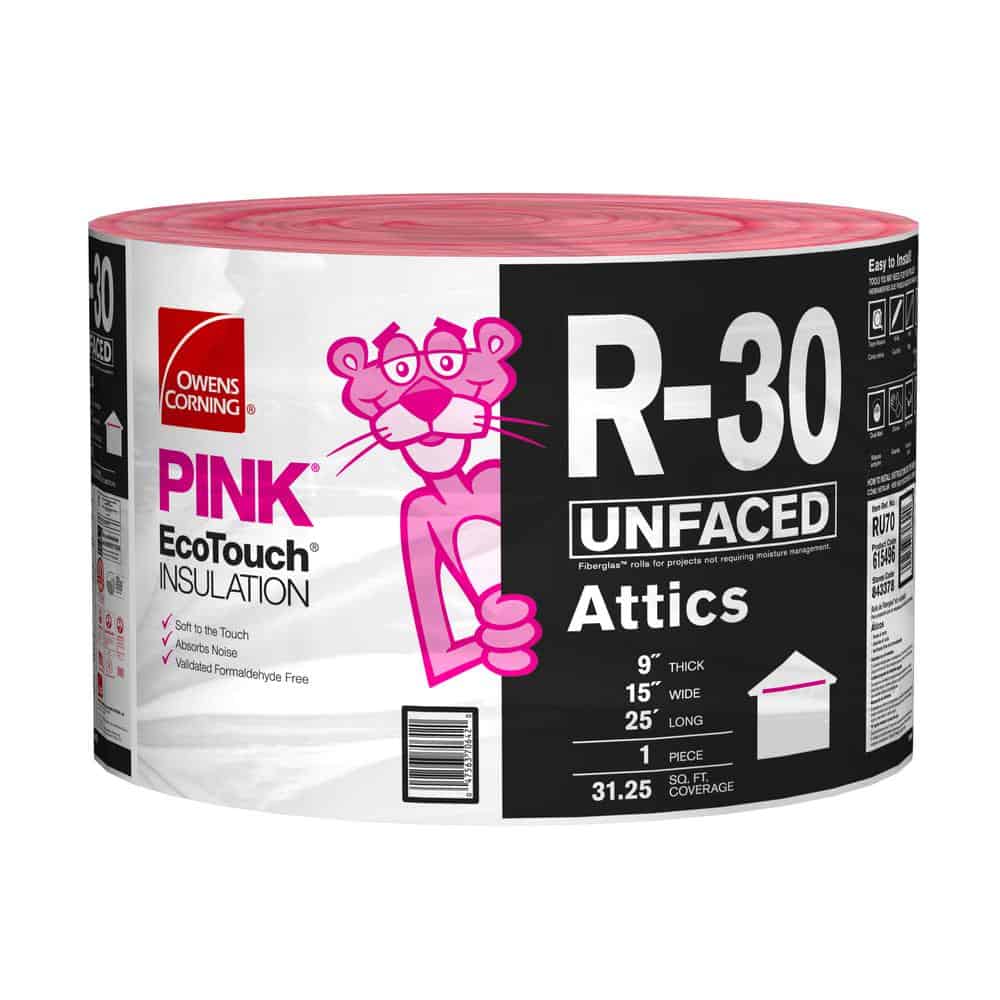
Good question, If I were reading this article. Then that would probably be my first thought. Why focus on insulation when there’s a bunch of other ways to heat a garage?
To answer this we need to take a step back and ask:
How can we give our garage heating system the best chance or being effective?
And when you stop, pause and think about this. It kinda starts answering itself. Think about it, if you invested in the absolute best dollar heating for your garage. Cranked up the dial but left the garage door and windows open then you’re effectively throwing heat directly out the door!
OK this is obviously an exaggeration of what most people will actually do. Unless for some reason they really love giving bucket loads of cash to their utilities company. But it leads nicely into why insulation pays such an important part in your garages overall heating strategy.
Most garages are built to the absolute minimum spec. Meaning they have thin walls, plenty of air gaps between doors and windows. And typically won’t have insulation preinstalled.
So while my exaggerated example earlier doesn’t happen in the real world. The reality is even with closed garage doors and windows. You’re heating system is likely working way harder than it needs to in order to keep your garage nice and toasty while you work in it.

If you could point a heat camera onto a poorly insulated garage with the heating turned up you’d probably see a big orange or red roof plus a bunch of red around the garage door in the form of air gaps.
What we actually want is for the heat camera to show mostly deep blue colors, indicating that little heat is escaping the garage.
Why does this matter? Well if less heat is escaping then you need to spend less energy adding more heat into the garage!
Ok now we know insulation is important, let’s look at how we use insulation in our garages….
P.s. heat cameras are totally cool. If you’ve got one I’m officially jealous. I had to borrow one off a neighbor for my project. If you’re interested in a review of the best heat cameras on the market let me know in the comments and I’ll put on together.
How To Insulate Your Garage
I’ve answered this question in a lot of depth in several previous articles so we won’t go into an exhaustive explanation in this article. What we will do is cover the broad strokes and if you want to learn more about garage insulation then I highly encourage you to check out my articles on:
- Should I Insulate My Garage – My Story With Pictures
- Should I Insulate My Garage Ceiling – The Complete Answer
- Should I Insulate My Detached Garage – Things you Should Know
There’s a bunch of effective strategies for insulating you garage. For me I found the best way to strategize was to conceptually think I was wrapping my garage in a giant sweater.
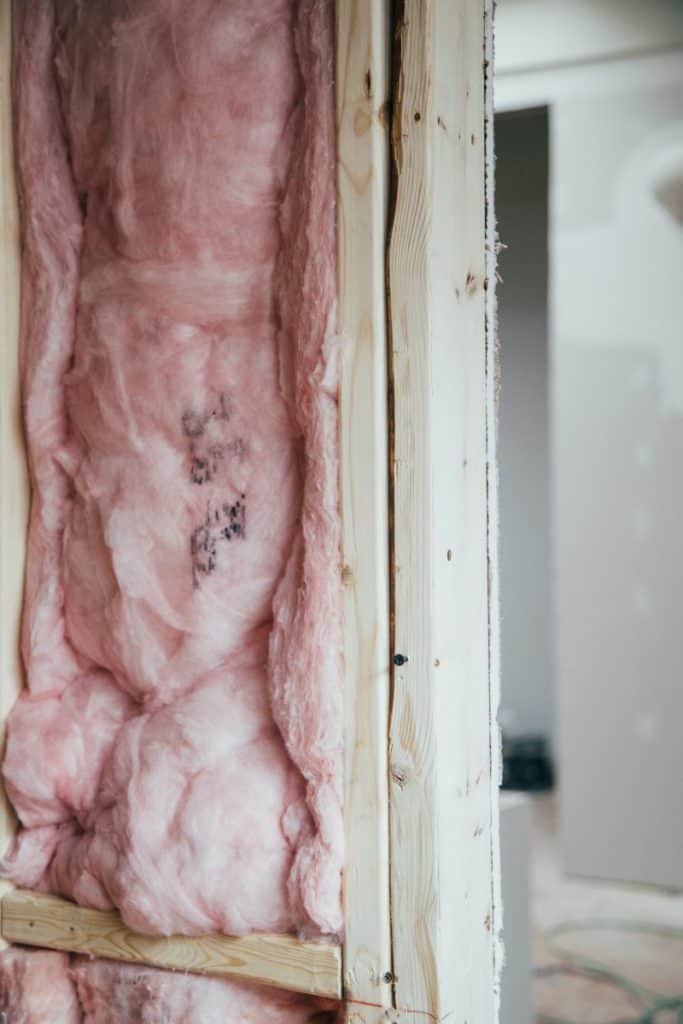
Garage Walls
So that’s covering the walls with either stiff foam board insulation or alternatively fiber glass rolls of insulation. Both perform similarly. However I’d say that still foam board insulation is probably easier to install since you can get it with a hard finish meaning you don’t need to cover it with sheet rock (Again if you’re interested in going more in detail with this, check out the links above).
Garage Floors
This is one that people often overlook and shouldn’t! Insulating the floor of a garage isn’t that hard. You can get rigid foam insulation specifically designed for this purpose.
Don’t skip this step. You’d be amazed just how much heat escapes from a garage floor. Even though heat rises!
There’s also the fact that if you’re planning on spending time close to the floor of your garage like for instance if you’re working under a bike or car then you want to make sure the floor isn’t colder than the ambient temperature of the garage.
Garage Doors
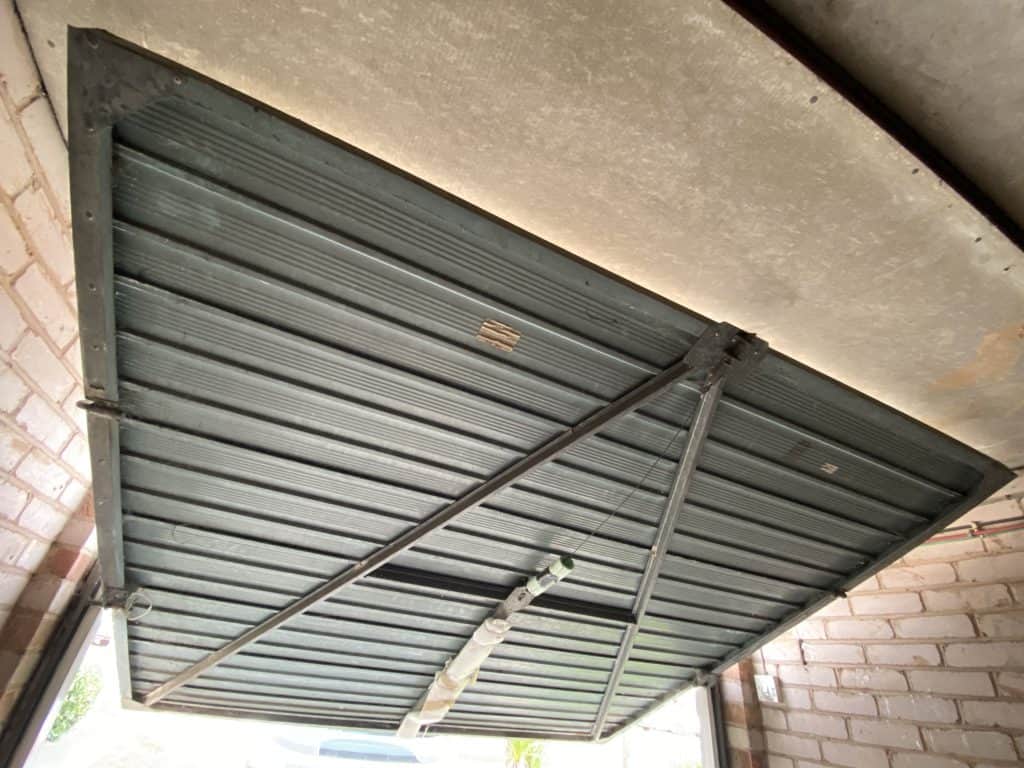
If there’s ever going to be a cold spot in your garage then it’s highly likely to be the garage doors. This is usually because of 2 reasons.
The first being that garage doors themselves are usually made of lightweight thin materials such as aluminium or fiberglass.
These materials are not great insulators and you’ll have to add a layer of insulation to them. You can get flexible insulation packs designed specifically for this purpose at Lowes and Home Depot.
The other possibility is that there are gaps around the door and the frame of the garage. You’d be surprised just how much heat they seep out. It’s like they act like a magnet and suck out all the precious heat in your garage.
Garage Ceiling
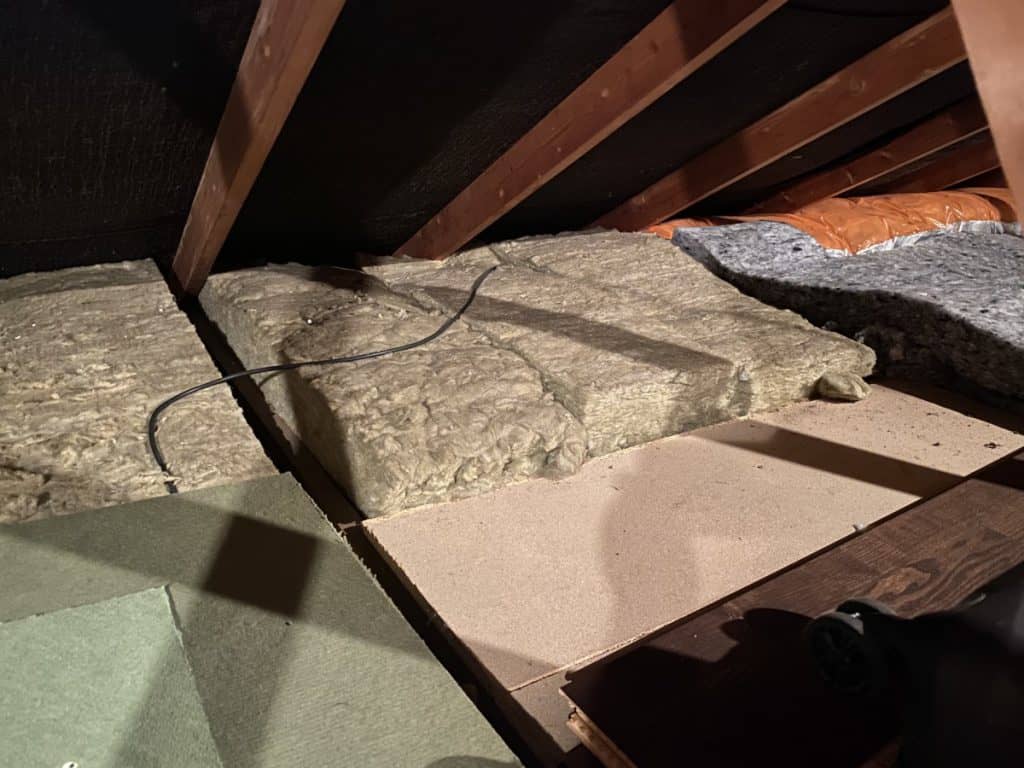
Hot air rises and no matter how well you’ve insulated the rest of your garage, it’ll be all for nothing if you let all that precious heat escape up into the atmosphere.
This doesn’t have to be anything fancy, since the thermal properties of insulation are pretty similar. Plus paying an extra say 50% doesn’t equate to 50% more thermal efficiency (more like 10%). So for my money I’d go with something like Owens Corning R-30 Kraft Faced Fiberglass Insulation, an 8 pack should be suitable for most garage sizes.
Best Ways To Heat Your Garage
If we’ve done a good job of insulating our garage, then this step is relatively simple. That’s because we’ve dramatically reduced the amount of energy required to heat our garage.
So you don’t necessarily need a big old heating unit permanently installed in the corner of your garage. Or even some elaborate blower style heating system that ties in to your houses gas or propane lines.
My recommendation is to go with a simple electric portable space heater!
They are super cheap and wildly available from any number of hardware stores and even places like Walmart.
Even the most basic models come with a built in thermostat that cuts out the heat once the ambient temperature reaches the desired level. They also provide pretty much instant heat so you’re not waiting around for them to warm up before you do.
And the last killer selling point for me is if you want to use them somewhere else then you can simply unplug them, pick it up and move it wherever you want!
What Type Of Space Heater is Best for Garages?
This answer is dependent on the size of your garage. For me a pretty small 1500 watt solution was more than adequate. It got the garage feeling toasty in no time.
For a larger garage you could do one of two things. The first being: buy a larger space heater. Say around the 5000 watt range for a double garage.
Or my preferred solution would be to just buy 2 smaller 1500 watt heating units and run them at the same time!
Easy right!?
You might be thinking that turning 2 heating units on at the same time and remembering to turn them off adds hassle and is another thing to remember.
I totally agree with you and that’s why I came up with a pretty smart solution to this using a WiFi connected smart plug. I’ll show you how to set one up in the next section. It’s so easy, even my 80 year old grandmother could do it.
Making Your Garage Heating Smart
This is my pat yourself on the back moment.
One of the most underrated inventions to come out of the IOT (Internet Of Things) revolution was the smart socket. Let me explain….
You take a regular plug, then you plug the smart socket into the wall and then the regular plug in to the smart socket. Then this is where the magic comes in. Because the smart socket is well…smart. You can turn your electrical device (in this case a space heater) on and off through you a phone app.
This means you can do clever things like turn on the heat 5 minutes before you go to your garage. Meaning by the time you get there, it’s nice and warm.
The other great thing is you get set up a electronic schedule. Meaning you can go into the app and choose when and for how long you want the device to stay on for.
This could be useful if you get home from your daily commute and want the garage warmed by the time you get home!
What Smart Socket Should I go for?
All the major brands offer pretty similar features. There’s even some off brand options out there. For my money I went with TP-Link. They are the biggest and most recognisable brand.
The installation procedure to connect the smart socket to my iPhone was straight forward and I was up and running in no time.
Here’s a very brief guide on setting up your TP-Link smart socked. I’m planning on putting a much more comprehensive guide up in the future. I’ll add the link to the article as soon as I do.
- Plug the TP-Link socket into the wall
- Plug your space heater into the TP-Link
- Connect Your phone to the TP-links WiFi
- It’ll ask you to enter you homes WiFi password
- That’s it! You’re pretty much setup.
You can now control you smart socket from anywhere in your home, or the world for that matter.
How Does This Stack Up to the Alternatives?
Don’t get me wrong, I’m not saying these solutions aren’t good. They are good! In fact they’re great. I’m simply saying that for most cases you probably aren’t going to need them to satisfy your requirements and keep your garage warm.
For instance you might want to consider a more robust heating solution if you are working in an environment that generates a lot of dust. In this case you could look at integrating the heating and cooling with a dust extraction system.
You might also want to take into considering cooling! Because this article has focused entirely on heating a garage. What about cooling via an AC system. My example won’t satisfy those requirements.
I’m going to write a few more articles covering my take on some of the more exotic solutions to heat and cool your garage. Let me know in the comments what you would like in particular. The feedback really helps!
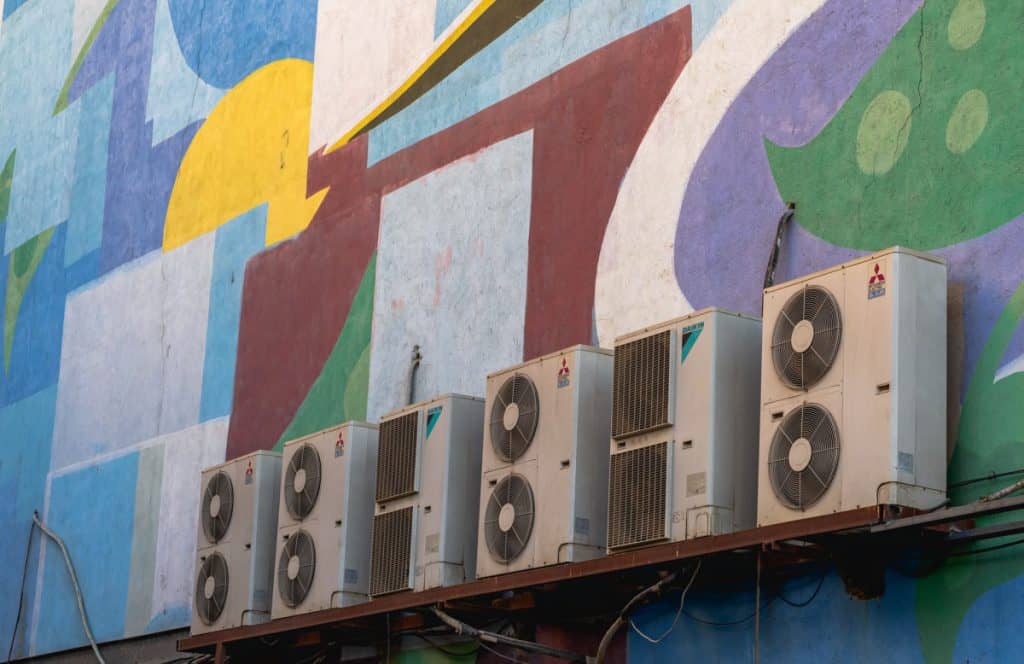
Conclusion
That’s all for this article. I hope it helped you explore the idea of heating your garage in a relatively easy way. The key take aways are that insulation is key to making the task of heating your garage way more simple.
And that through the use of clever solutions like smart sockets you can open up a huge range of features to relatively inexpensive humble space heats.
All the best and stay warm
Steve
Ps I you are interested in learning more about garage insulation here’s the links to the other Houshia articles:
- Should I Insulate My Garage – My Story With Pictures
- Should I Insulate My Garage Ceiling – The Complete Answer
- Should I Insulate My Detached Garage – Things you Should Know

